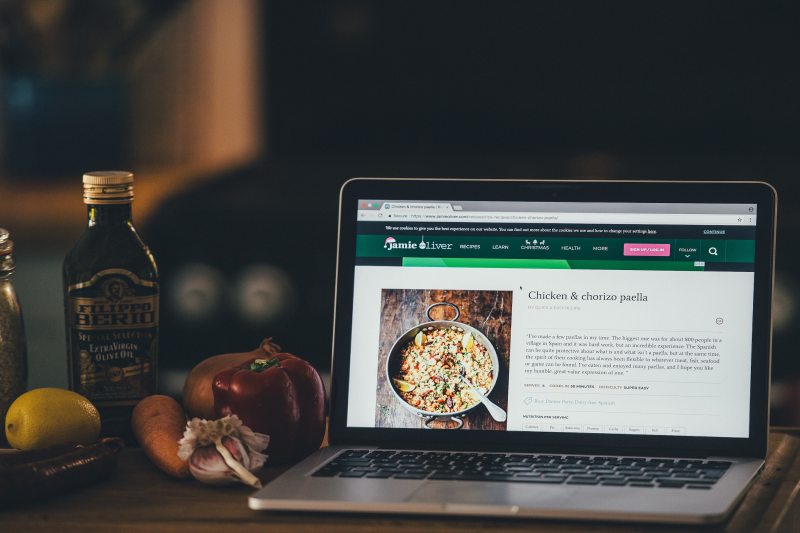If you’ve ever felt overwhelmed while browsing the aisles of the grocery store, waiting for inspiration to strike in order to give you some sense of direction in terms of what to buy and cook, you’re not alone. Many people shop and cook off the cuff without planning meals in advance. While this certainly can work, it’s not without its pitfalls: You may get stuck in a rut and continually make the same few dishes over and over—limiting the variety in your diet necessary for optimal nutrition—or you may forget ingredients you’ll end up needing or buy things that don’t go together in a cohesive meal.
Meal planning solves many of these issues and can help save time, money, and potential last-minute secondary trips to the store to pick up ingredients you didn’t know you’d need. Meal planning also makes it easier to stay on track with diet and weight loss goals, and eat balanced, nutritious meals throughout the week with plenty of variety. Although it may seem intimidating to delve into meal planning if you’ve always been spontaneous when it comes to grocery shopping and cooking, it’s actually quite simple to get started planning your weekly meals and most people find meal planning makes the entire process of preparing food more efficient and effective. To help get the best tips and advice on how to get started with meal planning, we spoke with Anna Rios, RDN, a Registered Dietitian Nutritionist and recipe developer. Keep reading to learn how to simplify and streamline your meal planning process.
What Are the Benefits of Meal Planning?
Meal planning can save time and money and prevent food waste by ensuring you’re only buying what you need and not ending up with odds and ends or extra ingredients that will spoil. Moreover, if you shop spontaneously, you may end up needing to take multiple trips to the store to gather everything you ultimately end up needing to prepare your meals. Rios adds that meal planning can improve the quality of your diet and reduce stress as well. “Meal planning makes it a lot easier to stay on track and eat balanced meals throughout the week,” she notes. “It also gives you peace of mind because you have a plan in place instead of having to figure out what to eat last minute.”
How Do You Go About Meal Planning?

Meal planning is actually quite simple and can be broken down into a few simple steps:
- Pick balanced recipes/dishes you want to make for the week.
- Map out a tentative/flexible meal schedule for the week.
- Make a list of the ingredients you’ll need to make the recipes, taking into account what you already have and which ingredients are used in multiple recipes.
- Buy the ingredients at the grocery store.
- Prep your meals by dicing produce, pre-cooking certain grains, creating marinades, etc.
What Factors Should You Consider When Meal Planning?

Rios says the most important factors to take into consideration when meal planning include your budget, dietary restrictions, health goals, time, and food preferences. It can also be helpful to consider what you have on hand already and what produce or foods are in season. If you’re working on a tight budget, before picking your recipes, you can browse the flyers (online or via paper mail) from your local grocery store to note any upcoming sales or clip available coupons. Once you know which foods are on sale, you can search for recipes that will incorporate these deal items to cut costs. This way, you can take advantage of the cost savings without having to think on your feet at the store and come up with a recipe that will use the sale ingredients on the spot.
Another benefit of meal planning is the potential to make it easier to align what you actually end up preparing and eating with your dietary goals. All too often, people set intentions to eat healthily or follow a certain dietary plan like the Mediterranean Diet or the DASH Diet, but all this can get thrown out the window when spontaneously shopping or trying to cobble together a meal last minute with whatever ingredients you have on hand.
“In general, you want to make sure to include the following food groups at every meal—proteins, complex carbohydrates, vegetables, and healthy fats. Including all food groups will assure proper nutrition, energy and will keep you full until your next meal,” explains Rios. “It’s also important to check in with a registered dietitian if you have health concerns. Everyone is different and dietary needs vary from person to person.”
Avoiding the Common Pitfalls of Meal Planning
Rios says there are a few common pitfalls or barriers to meal planning, but these can be easily avoided. “Making unrealistic goals can often leave us feeling overwhelmed,” she explains. “I recommend making realistic and attainable goals—start small! For example, begin by meal planning 1-2 days out of your week and build up from there. You can also make a small goal like adding more plant-based meals and prepping them before the week starts.”
She also says that meal planning offers a chance to add variety to your diet, which is not only optimal from a nutrition standpoint but also can keep eating fun and exciting. After all, eating the same meals day after day or week after week can get boring. “Make sure that you allocate 15-20 minutes once a week to look for new recipes or remake old favorites,” she advises.
Helpful Meal Planning Resources

Rios says there are a lot of resources online that can help with meal planning. “Looking for recipes through Pinterest, MyPlate.gov, recipe blogs, and YouTube can be a big motivator,” she shares. “I love using Pinterest to help organize my recipe categories from ‘quick and easy meals’ to ‘date night dinners.’ Finding new and exciting
Flexible Meal Planning
One common concern when it comes to meal planning is that people worry that they’ll plan a meal that they simply don’t feel like preparing or eating once that day rolls around. Rios says this problem can be sidestepped by taking a flexible approach to your meal planning. “Create a flexible meal plan so that you are able to eat intuitively. If you don’t feel like having a burrito bowl one day, make another meal that you planned for that week,” she says. “It’s also important to have backup recipes that are made using similar ingredients so that you can modify the meal if needed.” In other words, allow yourself the freedom to shift things around a bit. Your meal schedule doesn’t have to be written in stone.
Final Takeaway
Once you form the habit, meal planning is actually quite simple and can streamline mealtime in your home. It will save time and money, and keep you on track with diet goals. “Meal plan meals are ones you look forward to eating. If there is a dish that you absolutely love, make a double batch to have leftovers the next day,” suggests Rio. “Try new foods. Keeping it interesting and exciting is key!”



